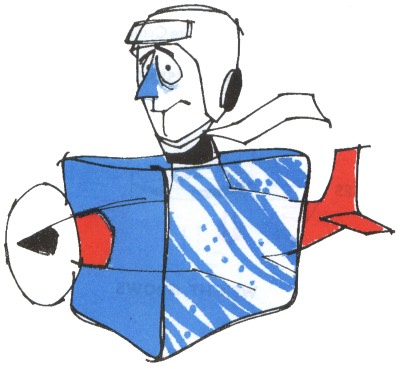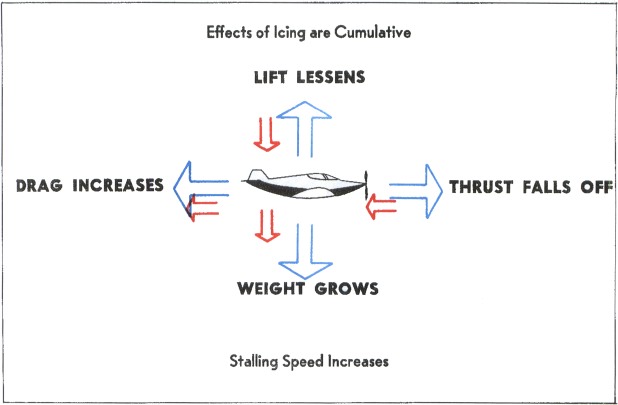Aviation Weather
full text of the classic FAA guide

Chapter 10
ICING
Aircraft icing is one of the major weather hazards to aviation. Icing is a cumulative hazard. It reduces aircraft efficiency by increasing weight, reducing lift, decreasing thrust, and increasing drag. As shown in figure 89, each effect tends to either slow the aircraft or force it downward. Icing also seriously impairs aircraft engine performance. Other icing effects include false indications on flight instruments, loss of radio communications, and loss of operation of control surfaces, brakes, and landing gear.
In this chapter we discuss the principles of structural, induction system, and instrument icing and relate icing to cloud types and other factors. Although ground icing and frost are structural icing, we discuss them separately because of their different effect on an aircraft. And we wind up the chapter with a few operational pointers.

Table of Contents
Previous Section: In Closing
Next Section: Structural Icing
A PDF version of this book is available here. You may be able to buy a printed copy of the book from amazon.com.
